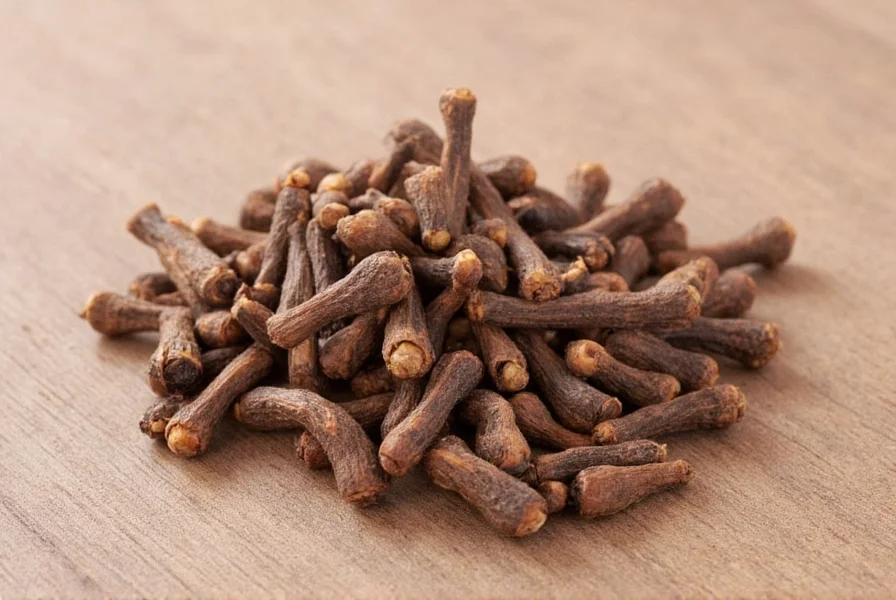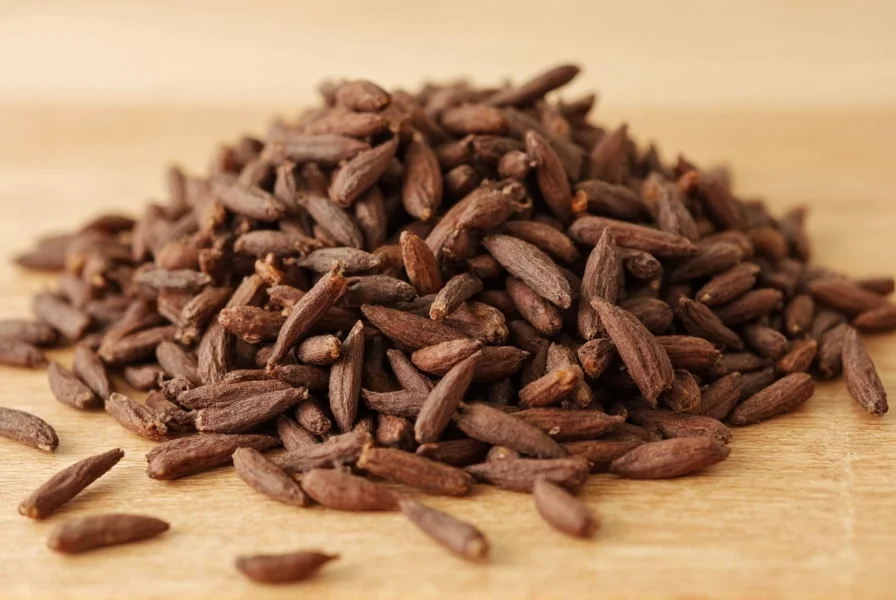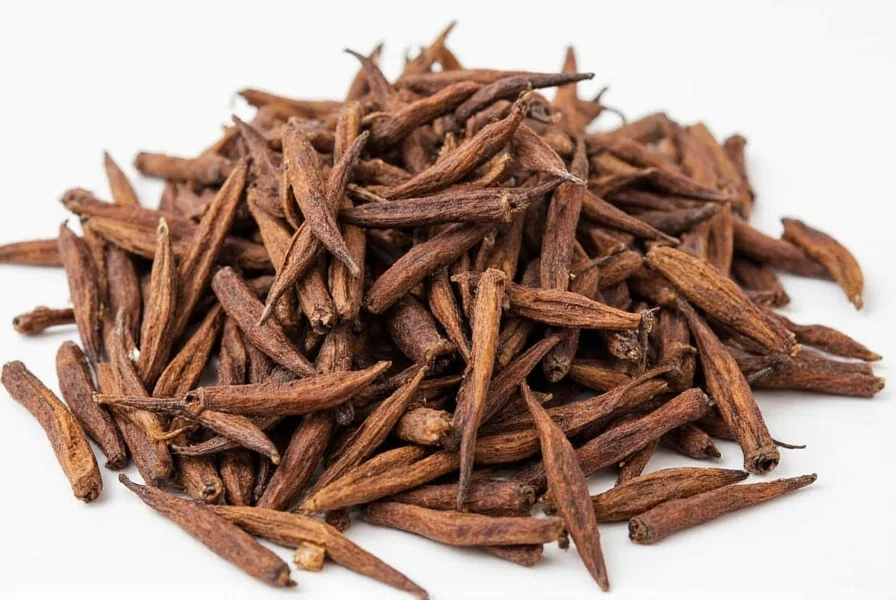A clove is the aromatic dried flower bud of the Syzygium aromaticum tree, an evergreen plant native to Indonesia's Maluku Islands. These small, nail-shaped spice buds contain eugenol, giving cloves their distinctive warm, pungent flavor and medicinal properties used worldwide in culinary and traditional medicine applications.
When you search for clove def, you're likely seeking clarity about this versatile botanical specimen. Cloves represent one of history's most traded spices, with archaeological evidence dating their use back to 1721 BCE. Understanding the clove definition extends beyond simple dictionary explanation to encompass its botanical identity, historical significance, and practical applications.
Botanical Classification and Origins
The scientific name Syzygium aromaticum classifies cloves within the Myrtaceae family. These tropical trees reach 8-12 meters in height and produce flower clusters that transition from pale pink to crimson before harvest. Harvesters collect the unopened buds, which measure approximately 1.5-2 cm long with a bulbous end and thin stem.

Physical Characteristics of Cloves
Cloves display distinctive physical properties that aid identification:
| Characteristic | Description |
|---|---|
| Color | Brown to reddish-brown when dried |
| Shape | Nail-like with swollen head|
| Aroma | Strong, spicy, warm scent|
| Taste | Intensely pungent with slight bitterness|
| Composition | 15-20% essential oil (primarily eugenol)
Culinary Applications of Cloves
Chefs worldwide utilize cloves for their complex flavor profile. The clove flower bud meaning in culinary contexts refers to its role as both a standalone spice and component in spice blends. Indian garam masala, Chinese five-spice powder, and pickling mixes all feature cloves prominently. When using whole cloves, remember they release flavor gradually—typically one clove suffices for dishes serving four people.
For those exploring what is a clove spice in practical terms, consider these applications:
- Studding onions for soups and stocks
- Infusing dairy products for custards and creams
- Adding depth to mulled wines and chai teas
- Preserving fruits through pickling processes
- Complementing game meats and rich stews
Medicinal Properties and Traditional Uses
The clove botanical definition includes recognition of its therapeutic compounds. Eugenol constitutes 70-90% of clove essential oil, providing analgesic and antiseptic properties. Dental professionals have used clove oil for centuries to alleviate toothaches—a practice supported by modern research showing eugenol's effectiveness in reducing dental pain.
Traditional medicine systems employ cloves for various purposes:
- Digestive aid for bloating and nausea
- Antimicrobial agent for oral health
- Anti-inflammatory treatment for arthritis
- Respiratory support for coughs and colds
- Natural preservative in food preparation
Nutritional Profile of Cloves
Despite their small size, cloves deliver significant nutritional value. A single teaspoon (2 grams) of ground cloves contains:
- Approximately 12 calories
- 1 gram dietary fiber
- 30% of daily manganese requirement
- Significant antioxidant compounds
- Trace amounts of vitamin K and calcium
Researchers have identified cloves as having one of the highest antioxidant capacities among common spices, with an ORAC value (Oxygen Radical Absorbance Capacity) exceeding 290,000 μmol TE/100g.
Common Misconceptions About Cloves
Many confuse cloves with similar-sounding terms. Understanding the clove definition clarifies these distinctions:
- Clove vs. garlic: While both appear in cooking, garlic belongs to the Allium family with bulbous cloves, whereas spice cloves are flower buds
- Clove vs. carnation: Carnations (Dianthus caryophyllus) are flowers sometimes called "clove pinks" due to scent similarity
- Whole vs. ground cloves: Whole cloves maintain flavor longer but require infusion time, while ground cloves offer immediate flavor release
Storage and Selection Tips
For optimal freshness when purchasing cloves, look for buds with:
- Deep reddish-brown color (avoid pale or yellowish specimens)
- Intact stems (broken stems indicate age)
- Strong aromatic scent when crushed
- Oil visible when pressed (indicates freshness)
Store cloves in airtight containers away from light and moisture. Properly stored, whole cloves maintain quality for 1-2 years, while ground cloves retain potency for 6-12 months. For those researching where do cloves come from, note that Zanzibar, Madagascar, and Indonesia produce over 80% of the world's supply.

Interesting Historical Facts
Cloves shaped global trade routes and colonial ambitions. Ancient Chinese records show cloves presented to emperors as early as 200 BCE to freshen breath during audiences. European demand for cloves fueled Portuguese and Dutch exploration, with the Dutch once destroying clove trees on conquered islands to maintain monopoly prices.
Today, understanding clove spice nutritional facts reveals why this spice maintained such high value throughout history. Modern analysis confirms cloves contain compounds with demonstrated antimicrobial, antioxidant, and anti-inflammatory properties that supported their historical medicinal uses.
What exactly is a clove in botanical terms?
A clove is the dried unopened flower bud of the Syzygium aromaticum tree, an evergreen plant in the Myrtaceae family. These small, nail-shaped buds develop on trees native to Indonesia's Maluku Islands and contain high concentrations of eugenol, which gives cloves their distinctive aroma and flavor.
How do cloves differ from other similar-sounding terms?
Cloves are often confused with garlic 'cloves' (which are individual segments of a garlic bulb) and 'clove' as in the flower (Dianthus caryophyllus, also called carnation). True spice cloves come exclusively from the Syzygium aromaticum tree and refer specifically to its dried flower buds, not bulb segments or flowers.
What are the primary uses of cloves in cooking?
Cooks use cloves primarily as a warming spice in both sweet and savory dishes. Common applications include studding onions for stocks, flavoring mulled wines, adding depth to meat braises, and as a component in spice blends like garam masala and five-spice powder. Due to their intense flavor, cooks typically use cloves sparingly—one whole clove often suffices for dishes serving four people.
What gives cloves their distinctive medicinal properties?
Eugenol constitutes 70-90% of clove essential oil and provides most medicinal benefits. This compound demonstrates analgesic, antiseptic, and anti-inflammatory properties. Research shows eugenol effectively reduces dental pain, making clove oil a traditional remedy for toothaches. Cloves also contain high antioxidant levels, with an ORAC value exceeding 290,000 μmol TE/100g.
How should I store cloves to maintain freshness?
Store whole cloves in airtight containers away from light, heat, and moisture. Properly stored, they maintain quality for 1-2 years. Ground cloves lose potency more quickly and remain fresh for 6-12 months. Check freshness by crushing a bud—if it releases aromatic oil and strong scent, it's still viable. Avoid refrigeration, which introduces moisture that degrades quality.











 浙公网安备
33010002000092号
浙公网安备
33010002000092号 浙B2-20120091-4
浙B2-20120091-4